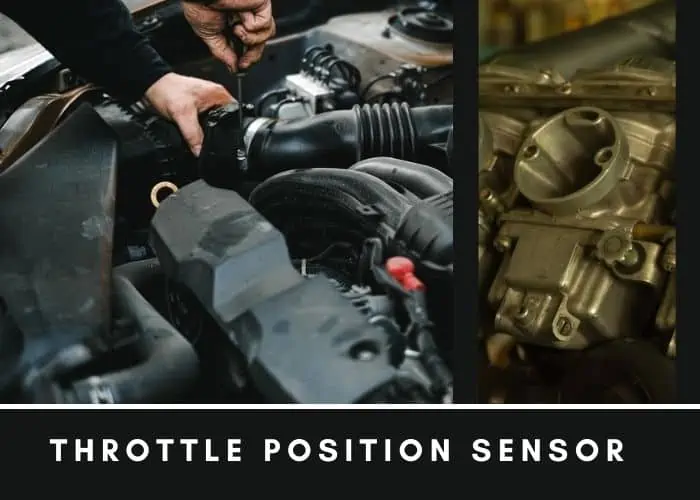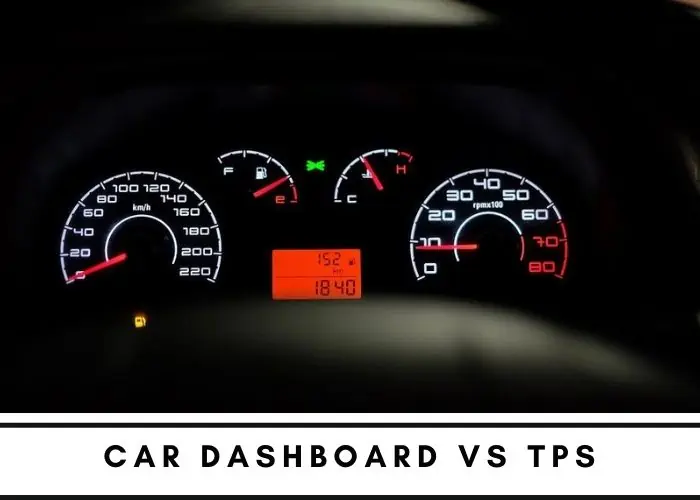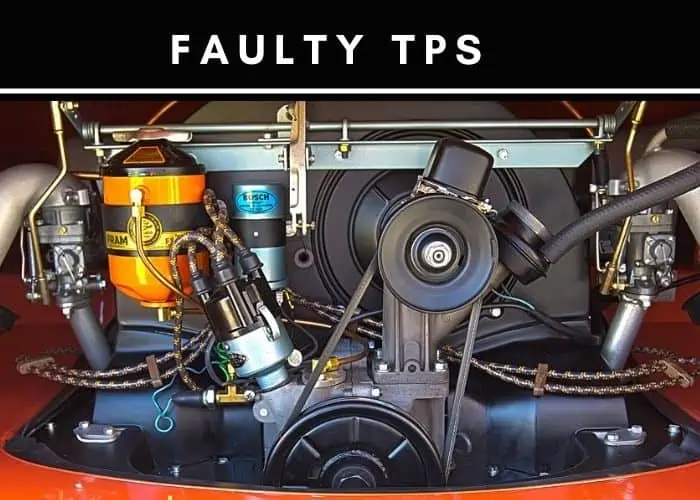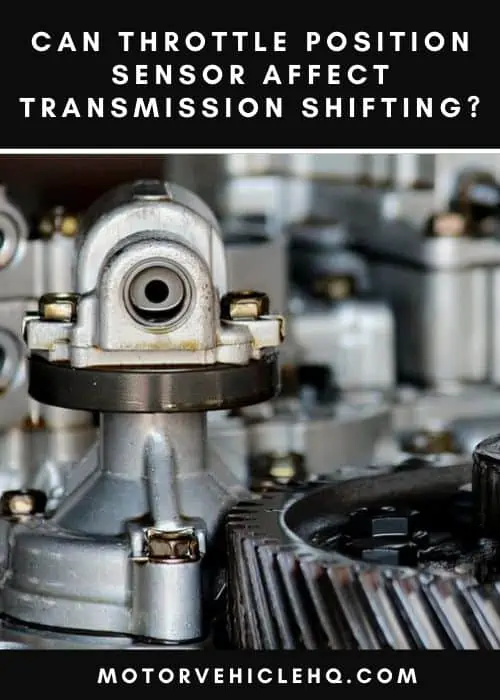The throttle position sensor is connected to a potentiometer which measures the amount of current flowing through it. When you press down on your accelerator pedal, more current flows through the potentiometer and into the ECU.
This causes an increase in fuel and spark timing, which results in faster engine speed and power output.
The TPS system ensures your engine is getting the right amount of fuel at all times.
In this article, we will explore how throttle position sensors can affect transmission shifting.
You can use the throttle position sensor to determine the position of a vehicle’s accelerator pedal.
It sends signals to the ECU (electronic control unit) that determines how much fuel should be injected and when the spark plugs should be ignited.
The operation of your vehicle’s transmission depends on several factors including engine speed, load torque, gearing ratios and road speed.
When you press down on your accelerator pedal, more current flows through your throttle position sensor. It causes an increase in fuel and spark timing which results in faster engine speed and power output.
What Is a Throttle Position Sensor?
The throttle position sensor is a device that measures how far open or closed the throttle is.
The throttle position sensor sends this information to the engine control unit (ECU), which then uses it to calculate how much fuel should be delivered to the engine.
If your car’s transmission shifts poorly, the problem may be due to a faulty throttle position sensor. To find out if this is what’s causing your car’s transmission problems, you’ll need to inspect the throttle position sensor and test its operation.
What Is the Difference Between a Car ECU and TPS?
A car ECU (engine control unit) is the computer that controls the engine. It monitors things like oil pressure and coolant temperature, then uses that information to control everything from fuel injection to spark timing.
A car TPS (throttle position sensor) is used to measure how far the accelerator pedal is pressed. It then sends this information through the wiring system in your vehicle to the ECU, which uses it to control fuel delivery and ignition timing.
The throttle position sensor (TPS) tells the ECU how much gas you’re giving it so that it can adjust the amount of fuel it gives back to you.
How To Test Your Throttle Position Sensor
There are two main types of throttle position sensors: analog and digital.
Analog sensors have a potentiometer (variable resistor) that varies in resistance as you turn it.
Digital sensors use an encoder circuit that produces pulses when the sensor is rotated. You can test either type by disconnecting it from its connector and checking its resistance with an ohmmeter.
If you’re testing with an analog sensor, rotate the shaft slowly while checking for changes in resistance; if you’re testing with a digital one, rotate it quickly while checking for changes in pulse frequency.
If you’re having a problem with your car’s transmission shifting, you may need to replace your old TPS with a new one.
Causes of Transmission Not Shifting Into Overdrive
Some vehicles have a problem with their transmission where it will not shift into overdrive. This can cause the vehicle to run very rough and the engine may even stall. It is important to determine the cause of this problem so that it can be corrected.
There are many things that could cause your transmission not to shift into overdrive, including:
- If the transmission fluid is low, it may not be able to shift into overdrive. Check the fluid level and add more if necessary.
- If there is too much air in the system, the transmission won’t shift into overdrive. Check for leaks and fix them if necessary.
- If the transaxle has failed, it may not be able to shift into overdrive. Check with a mechanic to see if this is the case and get your car fixed as soon as possible!
- If there is too much resistance in one of the drive belts, it won’t be able to shift into overdrive. Make sure that all of your belts are properly tightened and in good condition before you go any further.
- If one or more of your spark plugs are bad or misfiring, it won’t be able to shift into overdrive either. Replace them with new ones as soon as possible.
- A faulty fuel pump can also prevent your car from shifting into overdrive mode — check this out by using an ohmmeter on each side of the pump before continuing forward with any other troubleshooting steps.
Can You Drive With a Faulty TPS?
If you notice an issue with your TPS, you’ll want to head to a mechanic right away—but what if it’s not working at all? Can you still drive safely? Can throttle position sensor affect transmission shifting?
The short answer is yes. But there are some things you should know about driving with a faulty TPS before you take off down the road.
First, a non-functioning TPS won’t affect your ability to steer or brake. However, it could cause issues with other systems in your car, like air conditioning or power steering.
It also might cause problems with your cruise control and anti-lock brakes (ABS).
If you notice that any of these systems aren’t working right after replacing your TPS or after having one replaced by another mechanic, don’t drive the car until you’ve figured out what’s wrong.
Bad Throttle Position Sensor Symptoms
A bad throttle position sensor can give inaccurate readings or no readings at all, and this can cause shifting issues with an automatic transmission.
The problem comes from the fact that many vehicles these days are controlled by a computer called the engine control unit (ECU).
The computer controls different parts of the vehicle. This includes how fuel is delivered to the engine and how it’s ignited.
An engine that doesn’t receive enough fuel or timing that isn’t right will make the vehicle run poorly and stall or otherwise fail.
The car dashboard is a collection of indicators that show you how your vehicle is performing, while the TPS is an acronym for throttle position sensor.
Here are the symptoms:
Fail To Send a Signal to the Computer
The most common symptom of a bad TPS is trouble accelerating smoothly while driving at low speeds.
The cause is if the engine is trying to move too much weight in gear 2 or 3 and can’t get up to speed quickly enough.
Instead of smoothly accelerating up to speed, it feels like you’re stepping on an accelerator stuck in place.
If this sounds like something you’ve experienced recently (like after driving through wet weather), there’s a good chance that you need to replace your car throttle position sensor.
If your car’s TPS is faulty, it can cause your car to have trouble starting and will not perform well in extreme temperatures.
Wiring Problems Can Cause Failure To Shift Out of Low Gear
Wiring problems can cause many issues, including failure to shift out of low gear. It could also result in the transmission not shifting into third gear.
It can happen if there’s a short or open circuit in the wiring system, and it causes excessive resistance or a voltage drop on one wire that shifts the ignition timing out of specification.
You should also be aware that some modern vehicles have automatic transmissions that will shift into neutral when they sense an electrical problem with their computer control system.
It can happen without any warning light turning on, so you’ll want to check your car’s manual and ensure you know what signals mean trouble before driving it anywhere far away from home.
The wiring harness connects the TPS to other parts of your vehicle’s computer system.
Improper Adjustment Can Cause Shifting Problems
If you do not adjust the throttle position sensor properly, it causes shifting problems. To check if there’s an issue with your throttle position sensor:
- Place the transmission in neutral and start your car with the engine off. Turn on the ignition, but don’t start it yet. Take a rag and wipe down all the connectors where wires connect on top of the throttle body until you see clean metal with no rust or corrosion around them.
- With your foot on the brake pedal and accelerator, pedal pressed halfway, use a voltmeter to measure voltage between two terminals listed as TPS or TPS 1 on either side of the wire harness connector near the top-left corner of the engine block (green arrow).
- If the voltage reading is 0 volts or fewer than 2 volts higher than the ground level at idle speed/RPMs, you have a potential problem with the TPS circuit inside the transmission computer box itself.
- The potential problem occurs because of a bad connection between the TPS connector and the main wiring harness connector plug located inside the middle backside wall. It opens underneath the hood latch handle release lever area (red arrow).
Cracked TPS Can Send Erroneous Signals to the Computer
If the throttle position sensor is cracked, it can send erroneous signals to the computer.
It means you can no longer rely on the throttle position sensor to work correctly, and it can lead to problems such as an engine stall.
You’ll need a mechanic or a professional to replace the throttle position sensor.
What You Can Do on Your Own
If you have a faulty TPS, your car will run poorly and could experience other problems, like stalling or hesitation between gears. This means that it’s essential to make sure you have a working TPS if you want your car to drive correctly.
If yours is faulty, you need to sort it out as soon as possible. Luckily, there are some things you can do on your own before taking it in for repairs:
1) Check for loose connections — You should look for any loose wires or connectors near where your TPS is located; these could be causing problems with its signal transmission
2) Remove dirt from connectors — Dirt can interfere with how well electricity travels through wires and connectors, so make sure there isn’t any near where your TPS is installed (if there is, try cleaning it off).
3) Check for burnt out fuses — If you notice that one of your fuses has blown out while driving recently (or even just sitting idly), then that could mean something else besides the fuse.
How To Replace TPS
Replacing the TPS in your car is a relatively easy process.
First, find the TPS. (It’s usually under the hood by the battery.)
Next, disconnect it from its harness. There are probably two or three connectors on it that you have to wiggle loose.
Then, take out the old TPS and put in the new one. You’ll need to make sure it fits perfectly into place or else it won’t work properly.
Conclusion
Your throttle positioning sensor can be dirty, faulty, or otherwise slow in responding to driver input. Can throttle position sensor affect transmission shifting?
Yes, throttle position sensors can affect transmission shifting. It affects how the transmission behaves during shifting, and in some cases, it won’t shift at all.
It’s also important to keep your TPS clean so that it can work properly.
Make sure the new TPS part is compatible with your car’s make, model, and year.
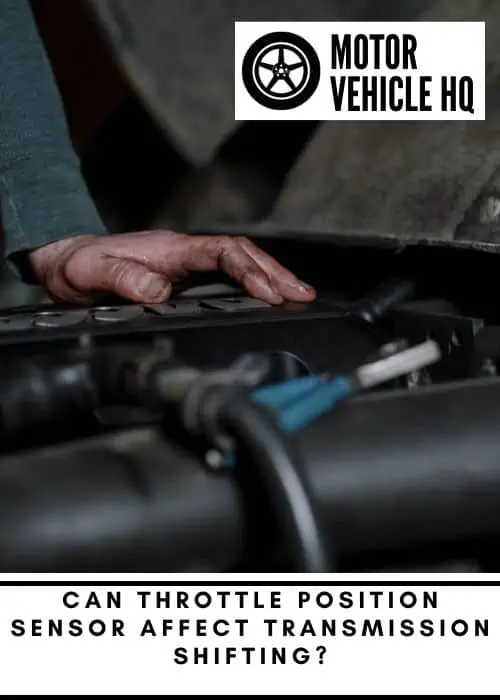

Jim Wicks is the founder of MotorVehicleHQ. With over two decades of experience in the automotive industry and a degree in Automotive Technology, Jim is a certified car expert who has worked in various roles ranging from a mechanic, car dealership manager, to a racing car driver. He has owned more than 20 cars over the past 15 years. Ask him about any vehicle you see on the road and he can tell you the make, model and year. He loves the aesthetics of all things cars, and keeps his vehicles in pristine condition.
In his free time, Jim enjoys getting his hands dirty under the hood of a classic car or taking long drives along the country roads. His favorite car? A 1967 Shelby GT500, a true classic that, according to Jim, “represents the pure essence of American muscle.”
